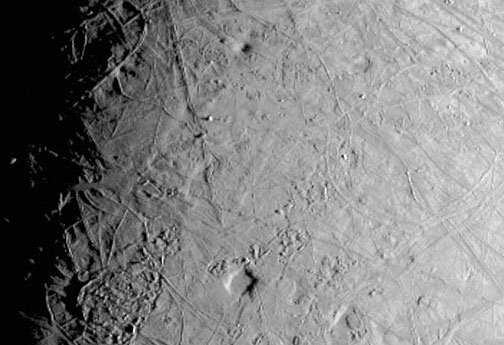After beaming back images from its fly-by of Jupiter’s largest moon, Ganymede, as well as stunning images of Jupiter itself, NASA’s Juno spacecraft this week did the same for another of the planet’s moons: Europa.
And the early results do no disappoint.
“This is the surface of Jupiter’s moon Europa, as seen today by our Juno Mission spacecraft from a distance of about 219 miles (352 kilometers),” NASA said in a tweet on Thursday.
📸 Witness Europa in unprecedented detail!
Today, @NASASolarSystem’s #JunoMission captured the highest resolution images taken of Jupiter’s moon in decades, as well as collected data on its interior, surface composition, & ionosphere. Here’s what we saw: https://t.co/h8fYr1qBcZ pic.twitter.com/eDDVyVw0nw
— NASA Astrobiology: Exploring Life in the Universe (@NASAAstrobio) September 29, 2022
The image, a larger version of which appears below, shows surface features in a region near the moon’s equator called Annwn Regio.

Europa is the sixth-largest moon in the solar system and is slightly smaller than Earth’s moon. Scientists believe a salty ocean could exist beneath an ice sheet a mile thick, raising the exciting possibility of Europa having the conditions to support some form of life.
The image is the first close-up of the Europa moon in more than two decades after NASA’s Galileo spacecraft came within 218 miles (351 kilometers) of its surface in 2020, and offers the best resolution of any Europa image to date.
Juno captured it while zipping by the moon’s surface at around 14.7 miles per second (23.6 kilometers per second).
Discussing the image, NASA said: “Due to the enhanced contrast between light and shadow seen along the terminator (the nightside boundary), rugged terrain features are easily seen, including tall shadow-casting blocks, while bright and dark ridges and troughs curve across the surface,” adding that the oblong pit near the terminator to the left of the image could be a degraded impact crater.
The fly-by has also provided NASA scientists with new data on Europa’s interior, surface composition, and ionosphere, which we can expect to hear more about in the coming weeks. More images like the one above can also be expected soon.
“It’s very early in the process, but by all indications Juno’s flyby of Europa was a great success,” said Scott Bolton, Juno principal investigator from Southwest Research Institute in San Antonio. “This first picture is just a glimpse of the remarkable new science to come from Juno’s entire suite of instruments and sensors that acquired data as we skimmed over the moon’s icy crust.”
Juno reached Jupiter in 2016 after launching from Earth five years earlier. NASA is currently preparing its Europa Clipper spacecraft for a mission in 2024 that will endeavor to learn even more about Jupiter’s icy moon, with one of its main goals to confirm whether or not it has the conditions to support life.
Editors’ Recommendations
Credit: Source link


Comments are closed.